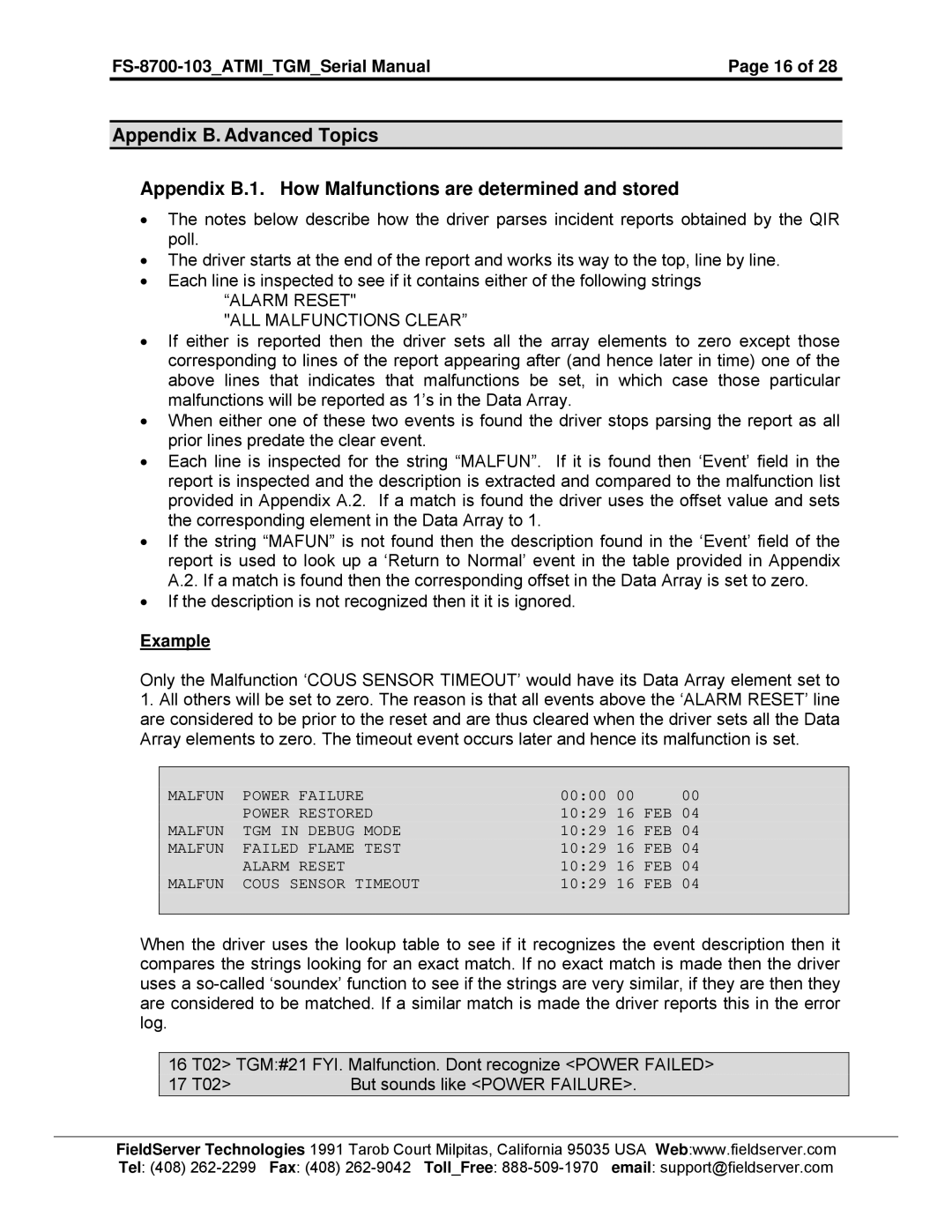FS-8700-103 specifications
The FieldServer FS-8700-103 is an advanced gateway solution designed to facilitate seamless communication between different building automation systems and devices. Its primary function is to provide interoperability among various protocols and devices, which is increasingly important in modern facility management. The FS-8700-103 alleviates common challenges faced by system integrators, allowing for easy integration and operation of diverse systems from multiple manufacturers.One of the standout features of the FieldServer FS-8700-103 is its support for multiple communication protocols. These include Modbus, BACnet, LonWorks, and SNMP, among others. This versatility allows the FS-8700-103 to serve as a bridge between legacy systems and newer technologies, thus extending the useful life of existing infrastructure while enabling the addition of advanced system capabilities.
The FS-8700-103 is equipped with numerous ports, including Ethernet connections, which support both wired and wireless communications. This flexibility ensures that the gateway can fit into various network configurations and adapt to different deployment scenarios. In addition, its robust design guarantees reliable performance even in demanding environments, making it suitable for use in commercial, industrial, and residential applications.
Another key characteristic of the FS-8700-103 is its intuitive web-based interface. This interface simplifies the configuration process, allowing users to set up the system with minimal technical expertise. The built-in diagnostic tools provide real-time monitoring and troubleshooting capabilities, enabling operators to quickly identify and address issues, thus reducing downtime and enhancing operational efficiency.
Security is also a notable feature of the FS-8700-103. With increasing concerns regarding cybersecurity in building management systems, this gateway incorporates advanced security protocols to protect data integrity and privacy. This ensures that sensitive information remains safeguarded against unauthorized access.
In summary, the FieldServer FS-8700-103 stands out as a reliable and versatile solution for achieving interoperability in building automation systems. Its support for multiple protocols, robust connectivity options, user-friendly interface, and strong security measures make it a valuable asset for any organization looking to streamline operations and enhance the effectiveness of their automation systems. With the FS-8700-103, organizations can move towards a more integrated and efficient future in facility management.

